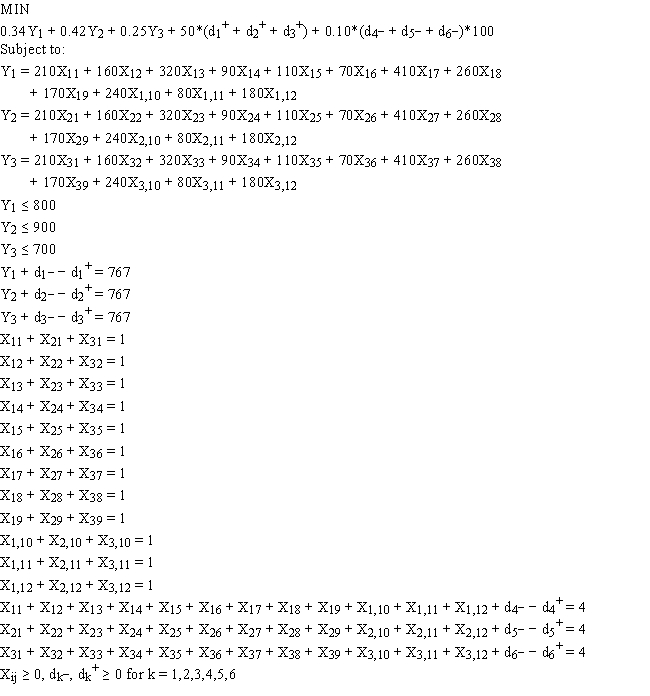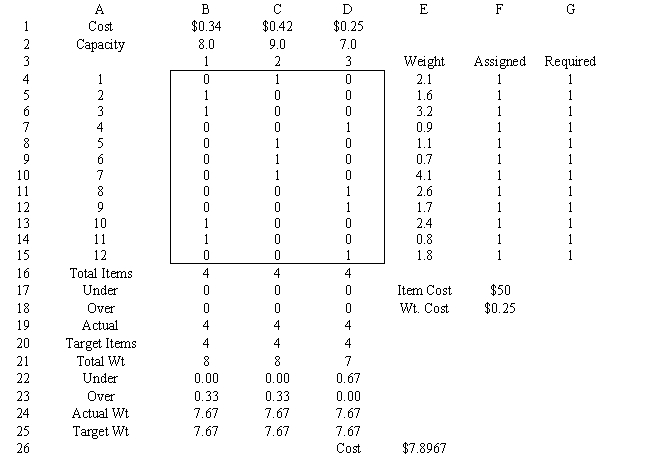Exhibit 7.4
The following questions are based on the problem below.
Robert Gardner runs a small, local-only delivery service. His fleet consists of three smaller panel trucks. He recently accepted a contract to deliver 12 shipping boxes of goods for delivery to 12 different customers. The box weights are: 210, 160, 320, 90, 110, 70, 410, 260, 170, 240, 80 and 180 for boxes 1 through 12, respectively. Since each truck differs each truck has different load capacities as given below:  Robert would like each truck equally loaded, both in terms of number of boxes and in terms of total weight, while minimizing his shipping costs. Assume a cost of $50 per item for trucks carrying extra boxes and $0.10 per pound cost for trucks carrying less weight.
Robert would like each truck equally loaded, both in terms of number of boxes and in terms of total weight, while minimizing his shipping costs. Assume a cost of $50 per item for trucks carrying extra boxes and $0.10 per pound cost for trucks carrying less weight.
The following integer goal programming formulation applies to his problem.
Y1 = weight loaded in truck 1; Y2 = weight loaded in truck 2; Y3 = weight loaded in truck 3;
Xi,j = 0 if truck i not loaded with box j; 1 if truck i loaded with box j.  Given the following spreadsheet solution of this integer goal programming formulation, answer the following questions.
Given the following spreadsheet solution of this integer goal programming formulation, answer the following questions. 
-Refer to Exhibit 7.4. What formulas should go in cell E26 of the spreadsheet?
Definitions:
Upward Communication
The flow of information from subordinate levels to superior levels in an organization's hierarchy.
Downward Communication
The flow of information from higher levels of an organization's hierarchy to the lower levels, often for directives, updates, or feedback.
Active Listening
A communication technique involving giving full attention to the speaker, understanding their message, and providing appropriate feedback.
Processing
The series of actions or steps taken in order to achieve a particular end, often relating to the handling or management of information or materials.
Q4: A hospital needs to determine how many
Q6: An investor is developing a portfolio of
Q13: Refer to Exhibit 11.17. What is the
Q17: A variable with a final value equal
Q44: How many binary variables are required to
Q47: Spreadsheet modeling is an acquired skill because<br>A)
Q49: Refer to Exhibit 7.1. Which cells are
Q51: A facility produces two products and wants
Q55: Most individuals manage their individual retirement accounts
Q60: In hierarchical clustering, the measure of similarity